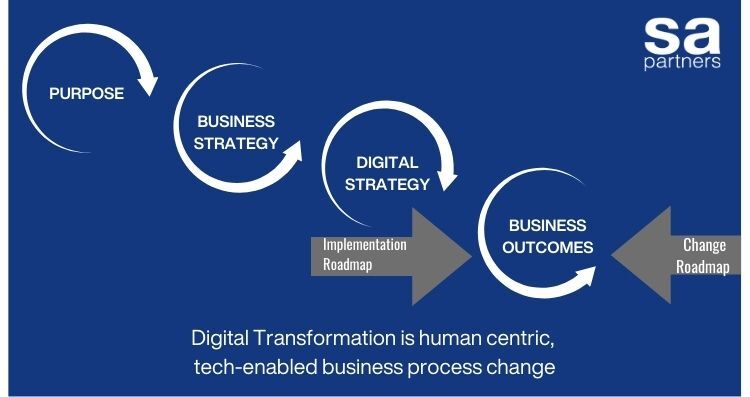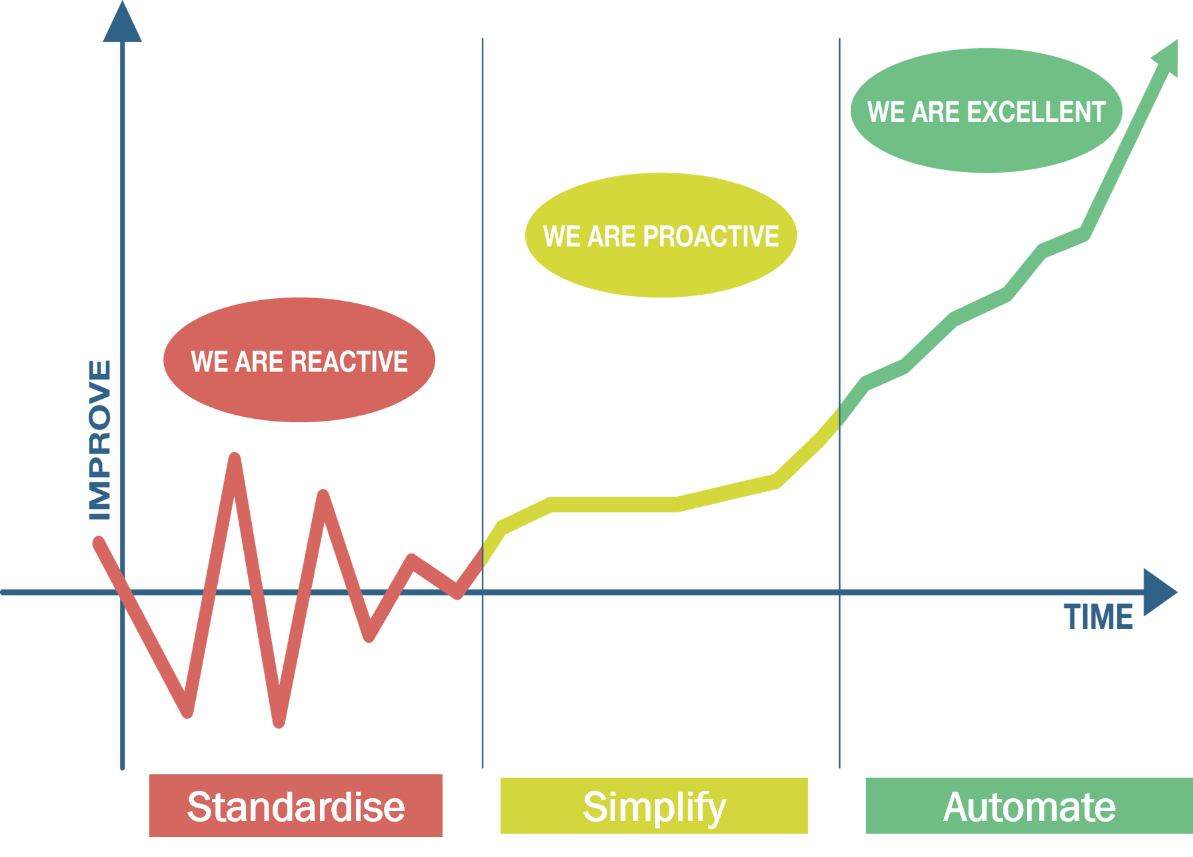Sure steps to happy digital transformation in your workplace
Sponsored by SA Partners
Digital transformation is easy. In a world of Software-as-a-Service, you can find a solution, sign a contract and be live all inside a week.
Digital transformation that delivers business results is, however, very hard. Too often, organisations go live with sub-par or inappropriate technology, for which they end up having to create inefficient workarounds. As a result, few digital solutions ever have the expected impact.
It’s clear that often the problem is not the implementation of technology, but everything that surrounds that implementation. So if you want to embark on a digital transformation process that’s not only smooth but has an actual, meaningful impact, you could do worse than follow this checklist:
Formulate a digital strategy
For most organisations, their “digital strategy” is largely technical; concerned mainly with outlining preferred vendors or security requirements. While these are important considerations, if they become the driving force behind your digital transformation, decisions will be end up being dominated by IT, and will almost certainly fail to deliver business outcomes.
A better approach is to create a more strategic, less technical approach to digital strategy.

Every organisation will have a business-wide strategy that outlines its goals and how it aims to achieve them. So any digital strategy will need to explain how it will enable the business strategy, and help further its purpose.
Once this digital strategy is in place, the organisation can start to look at its processes and decide which should be included in the digital transformation process.
By formulating a clear digital strategy, and making decisions based on it, each process that is digitally transformed should have a “golden thread” connecting it to the organisation’s purpose, ensuring an organisation’s limited resources will be invested in delivering the projects that will make a difference.
Engage your people
As with any strategy, a digital strategy should be formed by the executive team. This strategy, however, cannot just be a tool used to enforce executive decisions. To deliver it effectively, the whole organisation needs to be engaged.
Digital transformation at the executive level is generally seen as a way to do more with the same. However, this is rarely understood at the operational level; when there is talk of digitisation (let alone automation), the assumption is that it is going to result in job cuts. Where there is a feeling that the new technology will have a negative impact on career prospects, the people in your organisation may actively prevent digital projects from being a success.
To prevent this, your digital strategy must be explained to your entire organisation. The reason for the need to digitise must be clearly communicated by all levels, from the CEO to the shop floor, to generate positivity and keep people onside. The “what’s in it for me” (WiiFM) factor must also be clearly explained – for example, with time-saving efficiencies, digital transformation may give employees more time to work on interesting stretch projects or attend training courses. This way your team will be less likely to be sceptical. They’ll want the project to work because they’ll see it as a path towards their working lives improving.
Prepare your processes
Below is SA Partners’ Improvement Journey, which sketches out the process of a successful digital transformation. While it may be tempting to jump to the finish line and merely digitally transform a process that is not working, there are steps you need to take beforehand. The process needs to be standardised, then optimised, before it can finally be digitally transformed.

The first phase of maturity is the reactive phase, where standard ways of working don’t exist and result in an inability to consistently deliver satisfactory outputs. Consider a medical practice that doesn’t have a standard way of collecting a patient’s history in their intake process: some patients may provide this information via phone when booking the appointment; some may fill in a paper form at reception; others may not provide the information at all. Without a consistent method of collecting the correct information, issues will arise in the next stage (the consultation), where the doctor needs to spend additional time collecting the information, or may even make a misdiagnosis due to missing information.
The second phase is the proactive phase, where processes have been standardised and consistently deliver their required outputs, if inefficiently. Our medical practice at this stage will have, for example, introduced a paper form that every patient must complete prior to seeing the doctor. But let’s say that form has 20 questions, but only 15 collect data the doctor requires. Also, once complete, the administrator must manually enter the data from the paper form into the patient’s record. This process suffers from multiple forms of waste such as overproduction (collecting too much information), unused talent, extra processing (the administrator manually moving data from the form to the patient record), and inventory (storing data that is not used).
The third phase is excellence, where standardised, lean processes exist that are free of waste and capable of consistently meeting or exceeding customer expectations. At this stage of maturity the medical practice has shortened the form to only the 15 questions that are needed. The form is also available online for the patient to complete; once it is, the patient’s records are automatically updated.
The point here is that the process had to reach a certain level of maturity before it could be digitally transformed. While it would have been tempting to jump straight to the digital transformation aspect of the solution, doing so would only have resulted a technical solution that is either not fit for purpose, or a solution which digitises and automates the existing waste in the process.
Deliver change
Once you have digitally transformed a process, you have changed the way that you want work to be done.
This new way of working should be standardised by making process documentation available, and brought to life by delivering training to ensure everyone has both the capability and confidence to perform the new process. You should also expect that people will occasionally drift from the desired future state to old ways of working, so leaders need to monitor and encourage staff to stick to the new process until the change is fully embedded.
By following these four steps you will ensure that you are not only selecting the right processes to digitally transform, but that digital transformation becomes more than an IT project and delivers meaningful business results.
For more information please see: Digital Transformation – SA Partners.

Business Reporter Team
Most Viewed
Winston House, 3rd Floor, Units 306-309, 2-4 Dollis Park, London, N3 1HF
23-29 Hendon Lane, London, N3 1RT
020 8349 4363
© 2025, Lyonsdown Limited. Business Reporter® is a registered trademark of Lyonsdown Ltd. VAT registration number: 830519543





